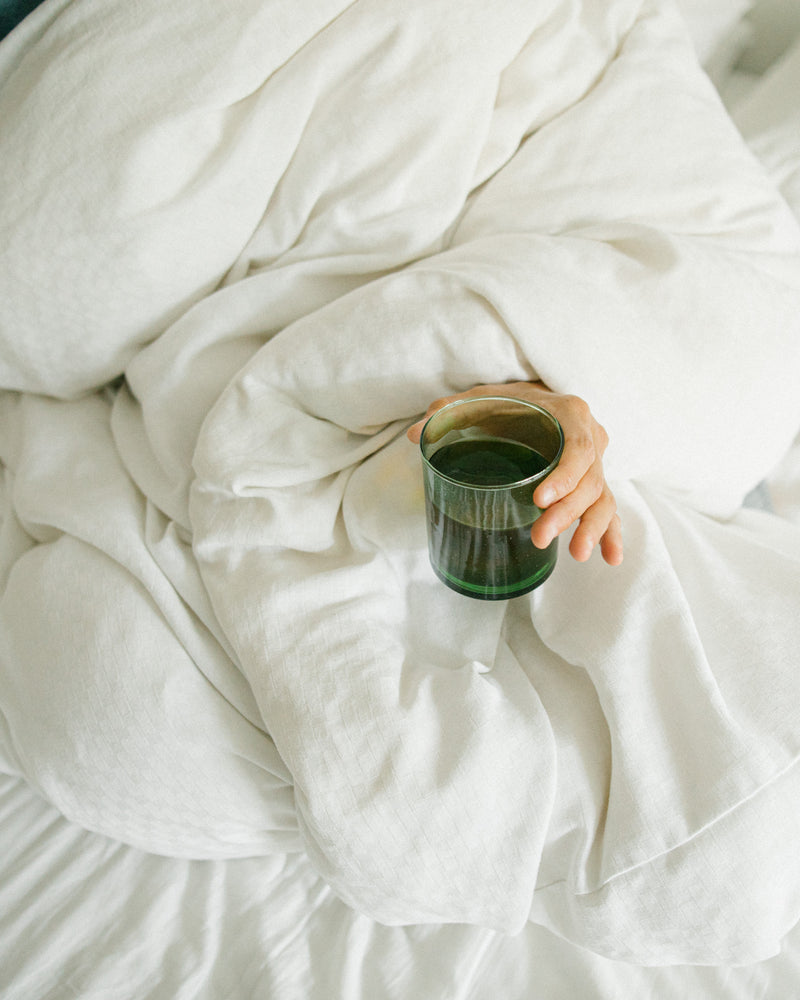A Tea Brewing Guide for Beginners

Brewing loose leaf tea is a simple yet enjoyable experience that can elevate your tea-drinking experience. The process involves selecting the right tea, preparing the water, choosing the appropriate filter, determining the tea to water ratio, and steeping for the appropriate time. In this guide, we'll walk you through the basics of brewing loose leaf tea.
1. The type of tea
The first step in brewing loose leaf tea is to determine what type of tea you're working with. Different types of tea have unique brewing requirements, so it's essential to understand the characteristics of the tea you're using. For instance, green teas are best brewed at lower temperatures, while black teas require higher temperatures. If you're new to tea brewing and want to learn, it can be interesting start with a single variety of tea and experiment with different brewing techniques to find your sweet spot.
2. Water temperature
The water temperature is a critical factor in brewing loose leaf tea. As mentioned earlier, different types of tea require different water temperatures. Water that's too hot can scorch the tea leaves, causing a bitter taste, while water that's too cold can lead to a weak, underwhelming flavor. As a general rule, green and white teas should be brewed at around 75°C to 85°C, while black teas can be brewed at higher temperatures of 95°C to 100°C. Herbal teas can be brewed at any temperature, but boiling water is the most common.
Pro tip: try brewing the our Starlight Chamomile at 70°C and at 100°C, and see if you can taste the difference. The lower temperature should make a sweeter, more floral cup of chamomile.
3. The filter
When brewing with whole leaf tea, the leaves expand as the water infuse them. If the leaves don’t have room to fully expand, you’ll be missing out on their full potential, so choosing the right filter is essential. A good filter ensures that the tea leaves have plenty of room to expand, but don’t fall out and into your cup. We carry a simple, stainless steel tea filter that’s perfect for any type of tea and that fits neatly in a cup.
4. Tea to water ratio
Determining the tea to water ratio is another crucial step in brewing loose leaf tea. The amount of tea you use depends on the type of tea and your personal preference. As a general rule, use around 2 to 3 grams of tea per 200ml of water. That’s 1-2 tea spoons-ish. This ratio can be adjusted depending on your taste preferences. If you prefer a stronger tea, use more tea leaves, and if you prefer a milder tea, use fewer tea leaves.
5. Steeping time
The steeping time also varies depending on the type of tea you're using. Steeping time refers to the amount of time the tea leaves are left in the water. Oversteeping can result in a bitter taste, while understeeping can lead to a weak flavor. As a general rule, black tea should be steeped for 2 to 4 minutes, while green and white teas should be steeped for 1 to 3 minutes. Herbal teas vary a lot and can be steeped for 2 to 7 minutes or longer, depending on the desired flavor strength. When you’re tea is done steeping, remember to separate the leaves from the water to avoid oversteeping as you’re enjoying your tea.
6. Number of infusions
One of the benefits of brewing loose leaf tea is that you can often infuse the leaves multiple times, each time producing a unique and nuanced flavor. This is especially true for high-quality teas, which can be steeped several times without losing flavor. Our premium Gentle Oolong is a wonderful example of how tea leaves can have many lives as you slurp through each infusion.
To get the most out of your loose leaf tea, try infusing the same leaves two or three times, gradually increasing the steeping time for each infusion. You may be surprised at how the flavor profile changes with each steeping. For example, the first infusion may be light and delicate, while the second infusion may be stronger and more full-bodied.
Experiment with the number of infusions and steeping times to find the perfect balance for your favorite teas. Not only will you get more out of your loose leaf tea, but you'll also reduce waste and save money in the long run.
7. Experiment!
Try using more leaves and steep for a shorter time. Or changing the temperature a bit. Try mixing two different teas and see what happens. Brewing loose leaf tea is simple but if you want, you can add all the complexity you desire.
By following the steps outlined above, you can brew a delicious cup of tea that's perfect for any occasion.
Enjoy the journey and savor every sip!
Latest posts

Different Teas for Different Times: When to Drink What
Tea is a versatile drink that can be enjoyed at any time of the day. The type of tea you drink can affect your mood, energy level, and overall well-being, so in this blog post, we will provide a quick guide on when to drink different types of tea during the day. This of course isn’t set in stone, but hopefully a helpful piece of inspiration for how tea can fit into to your life.

A Tea Guide for Beginners
There are many different types of tea to chose from. For someone who just likes to drink a nice cup once in a while, choosing between them can be overwhelming. We’re here to guide you to your perfect match(es).





